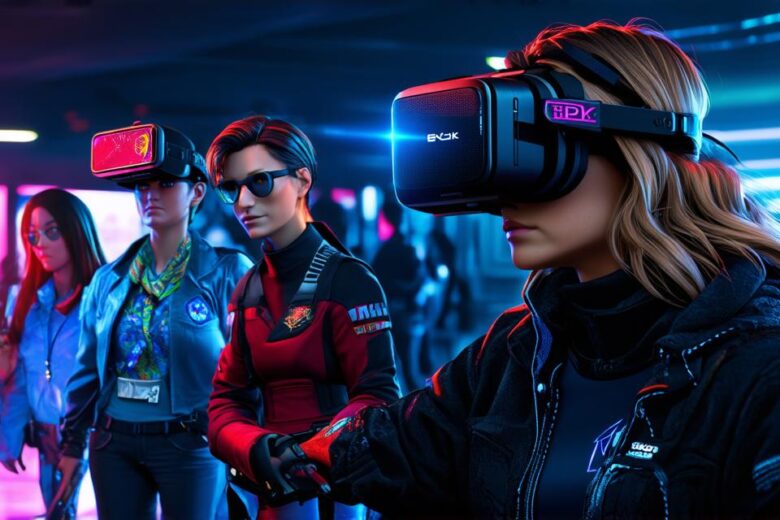What is Augmented Reality?
Augmented reality is a technology that overlays digital information on top of the real world. It enhances your perception of the physical environment by adding digital elements to it. AR applications can be used in a variety of industries, including gaming, education, marketing, and healthcare.
The most well-known example of AR is Pokemon Go, a mobile game that uses GPS technology to superimpose virtual creatures on real-world environments. However, AR has many practical applications beyond gaming. For instance, it can be used in the manufacturing industry to overlay instructions and schematics onto products during assembly, allowing for more efficient production processes.
What is Virtual Reality?

Virtual reality is a technology that simulates a 3D environment that you can interact with using specialized devices such as VR headsets or gloves equipped with sensors. It completely immerses you in a digital world and blocks out the real world, creating a sense of presence that is almost indistinguishable from being there in person.
The most well-known example of VR is probably Oculus Rift, a high-end VR headset used for gaming and other immersive experiences. However, VR has many practical applications beyond gaming as well, such as in the fields of architecture, design, and training simulations.
The Differences Between AR and VR
Although both AR and VR technologies enhance your perception of reality, they do so in different ways. AR adds digital elements to the real world, while VR creates a completely artificial environment that you can interact with.
AR is generally considered more practical and useful for everyday tasks, while VR is more commonly associated with entertainment and gaming. However, as technology continues to advance, we are likely to see more practical applications of VR emerge in the future.
Case Studies: Real-World Applications of AR and VR
One of the most exciting aspects of AR and VR is the potential for real-world applications. Here are a few examples of how these technologies are being used today:
-
AR in Education: AR is being used to enhance the learning experience in a variety of subjects, from biology to history. For example, students can use AR apps to explore the human body or visualize historical events in 3D.
-
AR in Retail: Retailers are using AR to create interactive product displays that allow customers to see how products would look in their homes before making a purchase. This has been shown to increase customer satisfaction and reduce return rates.
-
VR in Training: VR is being used for training simulations in fields such as aviation, military, and emergency services. These simulations provide a safe environment for trainees to practice complex procedures without risking injury or damage to equipment.
-
VR in Architecture: Architects are using VR to create virtual models of buildings and landscapes that can be viewed and interacted with by clients and stakeholders. This allows for more accurate visualization and collaboration during the design process.
The Future of AR and VR
As technology continues to advance, we can expect to see even more innovative applications of AR and VR emerge in the future. Some experts predict that AR will become an essential tool for businesses and industries, while others believe that VR will revolutionize the way we live and work.
One thing is certain: as AR and VR technologies continue to evolve, they will have a profound impact on the way we interact with the world around us. And as an AR developer, you will be at the forefront of this exciting new field.
Summary
In conclusion, understanding the meanings of augmented reality and virtual reality is essential for AR developers.
